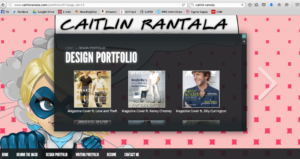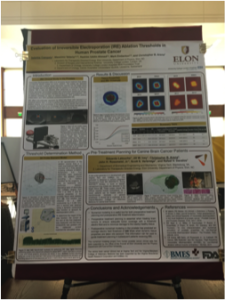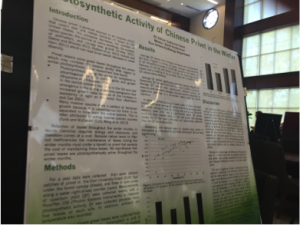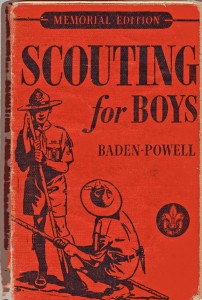By Sydney Daileanes
What Is Marketing All About?
A lot of different thoughts come to mind when one considers the field of marketing. There are such a variety of jobs within the marketing profession. According to Oxford’s online dictionary, marketing is defined as the process of interesting potential customers and clients in an organization’s products and/or services. Because marketing involves researching, promoting, selling, and distributing products or services, the word process is essential to this definition.
Over the past decade, an abundance of jobs in marketing has arisen mostly because of advancements in technology. The overall employment of managers of advertising, promotions, and marketing is projected to grow eight percent from 2018 to 2028. This projected growth is greater than that of any other occupation. In order to continue expanding, organizations must continuously develop advertising, promotions, and marketing campaigns.
What is Required For This Field?
Requirements for jobs in the marketing field vary based on the level and type of career. Expectations for an entry-level job in the marketing profession are generalized. For example, I examined one entry-level job advertisement which states that it is merely helpful for applicants to have experience in public relations, gifting, advertising, celebrity speaking engagements, or business development. Background training in research methods, databases, and general office skills is preferred. Prior experience as a participant in informal seminars such as social media marketing or digital marketing techniques is advantageous but not required. For this entry-level internship position, the requirements are mostly general, however. Overall, it targets undergraduate students who are looking for academic credit and experience.
During my research, I also analyzed the requirements for advertising, promotions, and marketing managers. The requisites for these types of jobs are more rigorous and direct. A bachelor’s degree is required for most advertising, promotions, and marketing management positions. These managers typically have years of work experience in advertising, marketing, promotions, or sales.
I had the privilege of interviewing my uncle, Mr. Bill Daileanes, about his career working as a respiratory biologic specialist at a pharmaceutical company called GlaxoSmithKline (GSK). In simple terms, he sells to doctors and hospitals a groundbreaking drug designed to treat asthma. Bill’s goal is to grow business in his territory. It took him many years to get to achieve the position he currently holds. He started with more basic work and eventually got a job he is most passionate about. He first earned a bachelor’s degree, which is required for most jobs in sales. Then, Bill needed to gain work experience and undergo years of training at GSK. Although there may be general requirements for jobs in the field of marketing initially, one is able to progress in the field by doing on-the-job training and gaining experience.
How Much Money Can Be Made?
Wages in different marketing fields depend on the field, company, location, and position held. The average salary for an entry level job in marketing is $42,144 per year in the United States. The median wage is the wage in the middle–half of all workers in an occupation earn more than that wage and half earn less. The median annual wage for advertising and promotions managers in May of 2018 was $117,130. The lowest ten percent of those employees earned less than $57,150, and the highest ten percent earned more than $208,000. The median annual wage for marketing managers was $134,290 in May 2018. The lowest ten percent of those employees earned less than $69,840, and the highest ten percent earned more than $208,000. It is certainly hard to become a manager in the field of marketing. When I interviewed Bill, he said when he started his career at Enterprise, he was not earning nearly as much money as he is now. Even though he is not a manager at his current job, he revealed the pay is generous and there are a lot of benefits and incentives. Becoming a manager is not necessary to be successful or to earn a good living in the field of marketing.
What Types of Writing Are Expected?
Many jobs in the marketing field require some form of informal or formal writing. Entry-level positions are designed to help employees to become more efficient and competent in different genres of writing in the field. Taking notes, planning campaigns, creating biographies for clients, and composing emails are the most common types of writing needed for entry-level marketing jobs. For example, the job advertisement that I analyzed was seeking an employee who could participate in the creative side of the business, which includes brainstorming sessions, researching celebrities and athletes for events and campaigns, and composing full biographies for client proposals.
As a respiratory biologic specialist, my uncle is not required to complete a lot of formal writing. While much of his day involves face-to-face encounters with physicians, doctors, and nurses, he also communicates with them through email. 70.4% of people in the Elon Poll say that they use email-writing weekly in their jobs. He said that his electronic communication is not merely an afterthought, however. According to the Elon Poll, 16% of graduate students responded that the biggest writing challenge they have encountered since graduating college is “Adapting to my readers’ expectations and needs.” It has taken Bill years to become skilled at constructing professional and succinct emails. When Bill worked at Enterprise, he was responsible for writing mailers. He was also responsible for writing to credit union members. If there was a sale to a certain credit union, he would have to document it in writing. Although Bill has not had to write many lengthy pieces of writing, the business emails and mailers he has had to write have to be meticulous, clear, and effective.
As an employee moves up the corporate ladder to a manager position, the ability to write well in many different genres is likely required. In addition to writing emails, taking notes, and planning, an upper-level employee must participate in more extensive written communication. For example, many marketing managers must plan promotional campaigns such as contests or giveaways, plan advertising campaigns (writing billboards), create websites and layouts for campaigns, develop pricing strategies, and analyze research studies. Approximately 63.6% of responders in the Elon Poll said writing effectively is important in their everyday life. The genre of writing suitable for each task is dependent on many different factors, but being able to write effectively is a necessity.
Difficulties With Writing
Most people have written academic essays, research papers, and electronic communication. The challenge is to adapt to the types of writing that each field, company, and position requires. For example, 19.6% of respondents from the Elon Poll said they struggled with writing they had never encountered before. To start off in an entry-level marketing job necessitates perfecting email skills and practicing written campaigns. One must have effective note-taking skills and the ability to compose biographies for clients. With job experience, an employee’s writing is likely to improve and expand.
When Uncle Bill must email physicians to promote his drug called NUCALA, he has to be cognizant that these physicians are some of the smartest people in the world. He must double check his punctuation and grammar. If his writing were unclear or weak, it could jeopardize his success in selling NUCALA to these doctors. With years of experience, Bill is confident that his electronic communication with doctors is proficient. Bill remembered that when he worked at Enterprise early on in his career, writing mailers was quite challenging. He said it was something he was not used to doing because he had little experience with this type of writing. While he learned to write academic papers in school, he learned to do situational writing while on the job.
Being a manager in a marketing position can be extremely difficult, and even with years of experience, written communication is not easy. Possessing the ability to write in a way that will please everyone is virtually impossible. Writing for an international audience also can be incredibly challenging. Some marketing managers lack the knowledge necessary to interpret marketing report data. Based on an Elon Poll, only 44.5% of people after college say they do not use advertising and promotional materials at work.
The field of marketing is in high demand. Job growth and career opportunities are on the rise. There are many reasons people pursue careers in marketing, whether they are interested in creativity or business. It is important not to forget the relevance of being an experienced writer, no matter the profession.
Image Sources:
GSK Headquarters in North Carolina. GSK Headquarters Link
Marketing Manager. Photo by John Rowley. Marketing Manager Link
This post is part of a series on writing in the professions. Posts were written by students in Dr. Jessie L. Moore’s fall 2019 Writing: Argument & Inquiry class and include research from the June 2019 Center for Engaged Learning/Elon Poll survey of college graduates, age 18-34, High Impact Undergraduate Experiences and How They Matter Now.








 “PWR has taught me the power of rhetoric as a tool for enacting change in the world, as well as the need to lead future authors by example towards an ethical relationship with rhetoric.”
“PWR has taught me the power of rhetoric as a tool for enacting change in the world, as well as the need to lead future authors by example towards an ethical relationship with rhetoric.”




